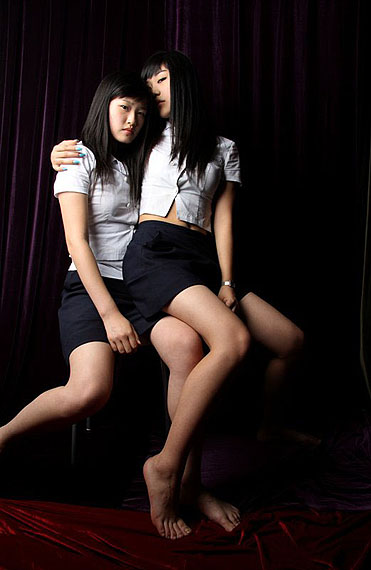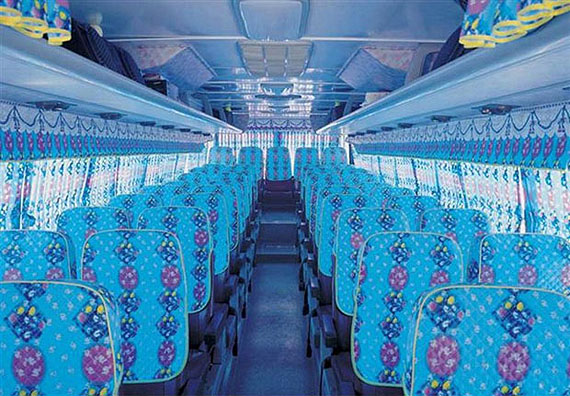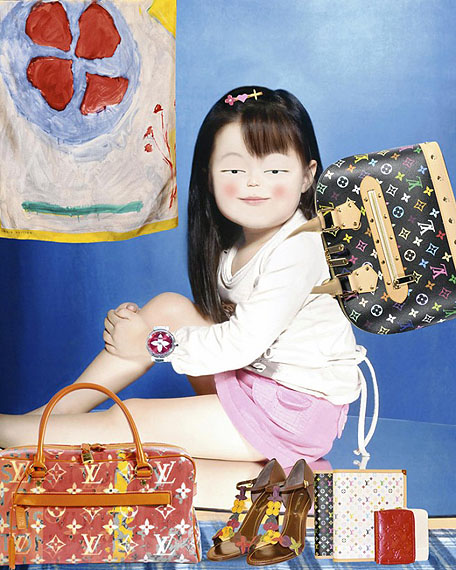
Chaotic Harmony: Contemporary Korean Photography
Sekwon Ahn » Seung Woo Back » Chan-Hyo Bae » Byung-Sang BANG » Bae Bien-U » Yong-Joon Cho » Kyungwoo Chun » Chu-ha Chung » EunJi Gim » Hyo Jin IN » Yeondoo JUNG » Atta Kim » Kyung Duk Kim » Sanggil Kim » Young-Sung Kim » Dae Soo Kim » Oksun KIM » Sookang Kim » Yunho Kim » Bohnchang Koo » Sung Soo Koo » Gap-Chul Lee » Jung-Jin Lee » Jung Lee » Sunmin Lee » Byung-hun Min » Hein-Kuhn Oh » Suk Kuhn Oh » Pa-Ya » Area Park » Hyung-Geun Park » Hyun-Doo Park » Eunkyung Shin » Han Sungpil » Won Seoung Won » Jaekwang Yang » Yeorrock » JeongMee Yoon » Myung Sook Yoon »
Exhibition: 3 Jul – 19 Sep 2010
Santa Barbara Museum of Art
1130 State Street
CA 93101-2746 Santa Barbara
+1-805-9634364
Tue-Sun 11-17

SBMA Presents the First Survey Exhibition of Korean Photography in U.S. “Chaotic Harmony” Includes Work of 40 Contemporary Artists July 3 – September 19, 2010 The first major exhibition in the United States of photographs made by contemporary Korean artists presently living in Korea, Chaotic Harmony: Contemporary Korean Photography opens a window to the dynamic photographic scene in the Republic of Korea, known in the West as South Korea. Bringing together work by 40 contemporary photographers, this presentation of 42 large-scale images surveys the range of contemporary issues through the themes of land and sea; urbanization and globalization; family, friends, and memory; identity: cultural and personal; and anxiety. Within the exhibition, two distinct generations of Korean artists are represented: those born in the mid-1950s and 1960s, during a succession of military dictatorships when the country was still largely agrarian, and those born in the 1970s, predominantly in urban areas and who came into maturity in the new democratic era which began in 1987. Co-organized by Karen Sinsheimer, Curator of Photography at the Santa Barbara Museum of Art and Anne Wilkes Tucker, The Gus and Lyndall Wortham Curator of Photography at the Museum of Fine Arts, Houston, this groundbreaking exhibition is not a presentation on “Koreanness,” although issues of cultural and personal identity are strong components. Rather, it is an attempt to identify Korea as a source of complex and stimulating visual ideas expressed through the medium of photography. Land and Sea Most of the work represented in the “Land and Sea” section of the exhibition was created by the first generation of Korean artists who traveled abroad for their graduate educations and brought their new ideas back to dramatically effect photographic styles in Korea. Nevertheless, many of them remained tied to Korean landscapes and traditions while embracing new aesthetic ideas. The extraordinarily beautiful land and seascapes in this section celebrate Korea’s surrounding oceans and the forests that cover large sections of its mountainous terrain. In addition, these photographers often explore religious practices that are primarily tied to nature. BAE Bien-u’s Kyung ju (1985) from the series Sonamu (which translates to “sacred pine grove”), documents mist-shrouded pine trees surrounding Gyeongiu, the ancient city of the Shilla kingdom (A.D. 668–935). KIM Young-sung’s untitled photograph (2005) from the Dolman series, shows a man standing atop one of Korea’s 50,000 dolmans (or ancient tombs). Over 60 percent of the world’s 80,000 dolmans are located in Korea. Gap-Chul Lee has documented shamanism (as well as Buddhism) in Korea for decades, but most specifically in his series Conflict and Reaction (1990–2001). Urbanization and Globalization An ancient civilization, South Korea has recently transformed into one of the world’s major global economies. Three-fourths of the population is categorized as urban, with half living in the country’s six major cities. Seoul is the world’s fourth largest metropolitan area. This section of the exhibition responds to the shift of the population from rural to city living, and the entrance of Korea on to the world stage. Young-Joon CHO’s Usual & Circle—Seoul Namdaemun, Rho Gwang-hyo (2005) is a diptych: the image on the left presents an urban area teeming with stores, advertisements, people, and traffic, while the image on the right isolates a woman who we would not have otherwise noticed in the larger view of the city. Her expression of emotional distress is consistent with all the isolated figures in the series. Ahn Sekwon documented Seoul’s rapid physical changes by photographing one particular neighborhood of the Weolgok-dong section of Seoul in 2005, 2006, and 2007 as the old homes are destroyed to make room for new high rises. The resulting triptych dramatically conveys the destruction of the modest-scale homes to make way for the towering scale of a modern city. Family, Friends, and Memory This section of the exhibition reflects the tensions in shifting societal values and practices as Korea continues its rapid growth. Traditionally, families followed Confucian norms: the father was the respected head of household and made decisions for his wife and children, financially supporting the family and arranging schooling and marriages. Social values have changed with increasing awareness of Western cultures through travel and the importation of Western products and media. Also with dramatic urban growth, came shifts from homes to crowded high rises, the entrance of women into the workforce, and other changes. Sunmin LEE’s photograph, Lee, Sunja’s House #1—Ancestral Rites (2004), portrays traditional values playing out in a modern setting: the men and boys of a family conduct traditional rituals in one room while the women watch from the doorway. Sanggil KIM’s off-line_Burberry internet community (2005) depicts a modern phenomenon: people who met over the internet, united by a common passion, in this case, that of wearing Burberry Check (registered as a trademark of the Burberry brand) and enjoying an “off-line” get-together. Identity: Cultural and Personal Between 1910 to 1945, Japan annexed Korea and systematically attempted to eradicate Korean culture and identity, for example, by banning Korean literature and language from schools. Only six years after World War II, Korea was devastated by the Korean War. This section of Chaotic Harmony investigates what it means to be Korean today after this disruptive history. Some artists, such as Bohnchang KOO, seek to reclaim past cultural history, by photographing treasured and uniquely Korean items such as Celadon—the main type of ceramic produced in ancient Korea and generally exalted as Korea’s most significant artistic legacy. Jungjin Lee in term photographs native crafts from Korean folk culture. Exploring more personal aspects of identity is Yeondoo JUNG’s Bewitched #2, a diptych juxtaposing images of the same teenager, mopping the floor of a Baskin Robbins in her day job and exploring the Artic regions in her dream job; and Hyo Jin IN’s Violet # 01 from the High School Lovers series (2007), which portrays an openly lesbian couple. Anxiety The “Anxiety” section of Chaotic Harmony investigates the constant tension provoked by strained relations and the potential of a violent outbreak between North and South Korea. Jung LEE’s Bordering North Korea, #2 (2005), from her 2005-2008 series of the same title, offers a view of North Korea seen from China and them superimposes over it an accompanying text chosen from the set phrases that North Koreans are allowed to say to the few foreigners who gain access to the country, such as “Our country is the paradise of the people.” She wants the viewer to experience both the beauty of the land and the palpable repression evident in the political slogans. Seung Woo Back references the subliminal fear of an attack from North Korea by staging “invasions” of toy soldiers that march across a family’s yard and up their wall to the kitchen window ledge, presumably unbeknownst to the person whose silhouette is visible though the window. Catalogue An illustrated catalogue of the same title accompanies Chaotic Harmony, co-published by the Santa Barbara Museum of Art and The Museum of Fine Arts, Houston, and distributed by Yale University Press. The catalogue presents one of the first overviews of the artists, subjects, and themes in contemporary Korean photography, with scholarly essays by Tucker and Sinsheimer; a chronology of post-World War II developments by noted photographer and curator Bohnchang Koo; an exhibition checklist; and brief biographies of the artists, compiled by MFAH photography curatorial assistant Natalie Zelt. The catalogue is available in the SBMA Museum Store. This exhibition is made possible through the generosity of the Charles and Mildred Bloom Fund, Lewis Bloom and Clay Tedeschi, Amanda and Jim McIntyre, the Dana and Albert R. Broccoli Charitable Foundation, SBMA PhotoFutures, Eric Skipsey, Korea Foundation (Seoul), and Korean Cultural Center (Los Angeles). The Santa Barbara Museum of Art is a privately funded, not-for-profit institution that presents internationally recognized collections and exhibitions and a broad array of cultural and educational activities as well as travel opportunities around the world.

